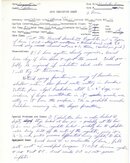There is one other aspect not shown here, and that is that the numbers included in their data are vastly different, and probably don't support normalizing to #/100,000.Comparing DSD mortality rates with that of recreational divers in general is not a valid analysis and would not support a conclusion that "relying on an instructor or DM to keep one out of trouble is cool."Leatherboot69:
I’ve only read the abstracts so I know I’d need to scrutinise the methodologies to make them empirically comparable, but the following sources indicate that DSD fatalities are 0.87 per 100,000 participants, compared to 2 per 100,000 participants for recreational scuba diving more generally.
Conditions for diving under the DSD program are vastly different from those that an OW diver would see and accomplish. In the DSD program, a diver-a scuba diver-is under the direct supervision of a dive professional at all times, with a very low diver-to-professional ratio, in very close contact distances. The professional is assumed to have total responsibility and control of the dive parameters. The OW recreational diver is understood to understand and have demonstrated sufficient level of skill to function independently and autonomously, ie - the ability to be responsible for their own safety (although, I doubt some could count the number of tanks on their back and get the same number twice-in-a-row). The dataset, if one includes all "recreational divers" includes folks with varying levels of supervision from loosely following a dive guide to zero professional supervision. The times I've been with groups as described in the OP's first observation, those included 6-10 folks following a DM, at distances from contact to 100+ ft laterally at depths ranging probably +/- 20 ft from the DM (sometimes I've been known to be 40 ft below as I was logging deep experience required towards future, higher-level tech cert at depths I cannot reach in local lakes).
Also, the time of exposure varies from DSD program divers - limited to only a few hours of very closely supervised dive activity under likely pretty good conditions to a lifetime of diving experience (days, weeks, months, maybe years underwater) in all sorts of conditions - temperature, visibility, currents, depths, overhead environments, night, varying equipment, etc.
Kinda like comparing driving a governed go-cart around a bumpered track at the local putt-putt golf-and-go-cart entertainment center to throwing somebody into day-to-day Houston traffic and comparing fatal accidents over time.
SeaRat




